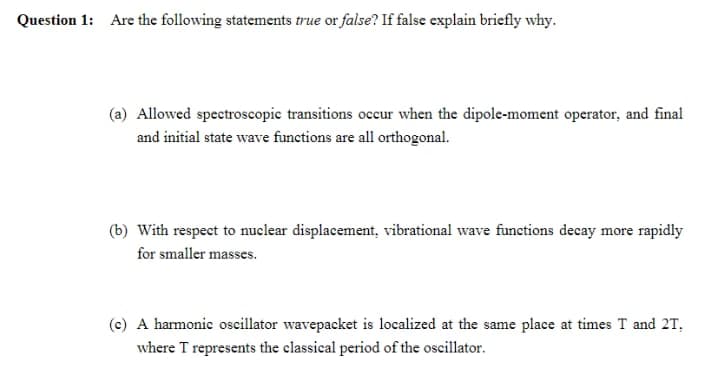Question 1: Are the following statements true or false? If false explain briefly why. (a) Allowed spectroscopic transitions occur when the dipole-moment operator, and final and initial state wave functions are all orthogonal. (b) With respect to nuclear displacement, vibrational wave functions decay more rapidly for smaller masses. (c) A harmonic oscillator wavepacket is localized at the same place at times T and 2T, where T represents the classical period of the oscillator.
Question 1: Are the following statements true or false? If false explain briefly why. (a) Allowed spectroscopic transitions occur when the dipole-moment operator, and final and initial state wave functions are all orthogonal. (b) With respect to nuclear displacement, vibrational wave functions decay more rapidly for smaller masses. (c) A harmonic oscillator wavepacket is localized at the same place at times T and 2T, where T represents the classical period of the oscillator.
Related questions
Question

Transcribed Image Text:Question 1: Are the following statements true or false? If false explain briefly why.
(a) Allowed spectroscopic transitions occur when the dipole-moment operator, and final
and initial state wave functions are all orthogonal.
(b) With respect to nuclear displacement, vibrational wave functions decay more rapidly
for smaller masses.
(c) A harmonic oscillator wavepacket is localized at the same place at times T and 2T,
where T represents the classical period of the oscillator.
Expert Solution
This question has been solved!
Explore an expertly crafted, step-by-step solution for a thorough understanding of key concepts.
This is a popular solution!
Trending now
This is a popular solution!
Step by step
Solved in 2 steps with 2 images
